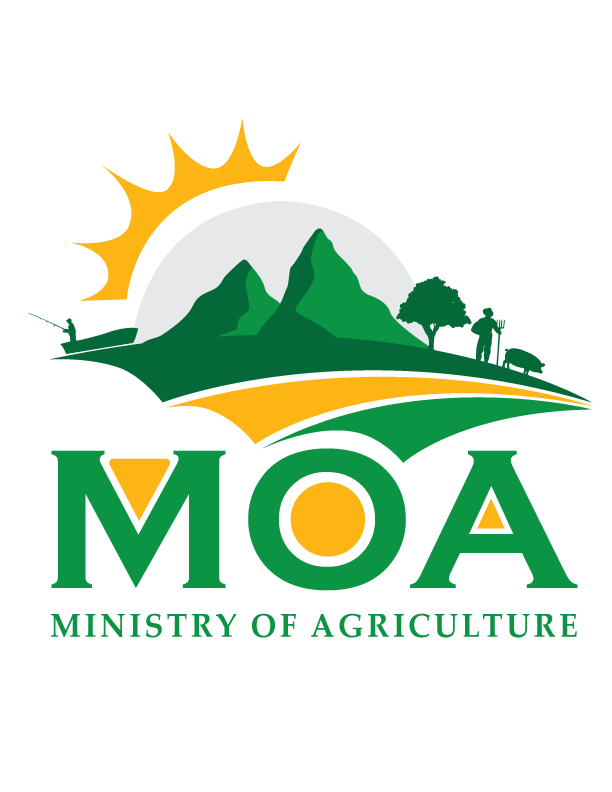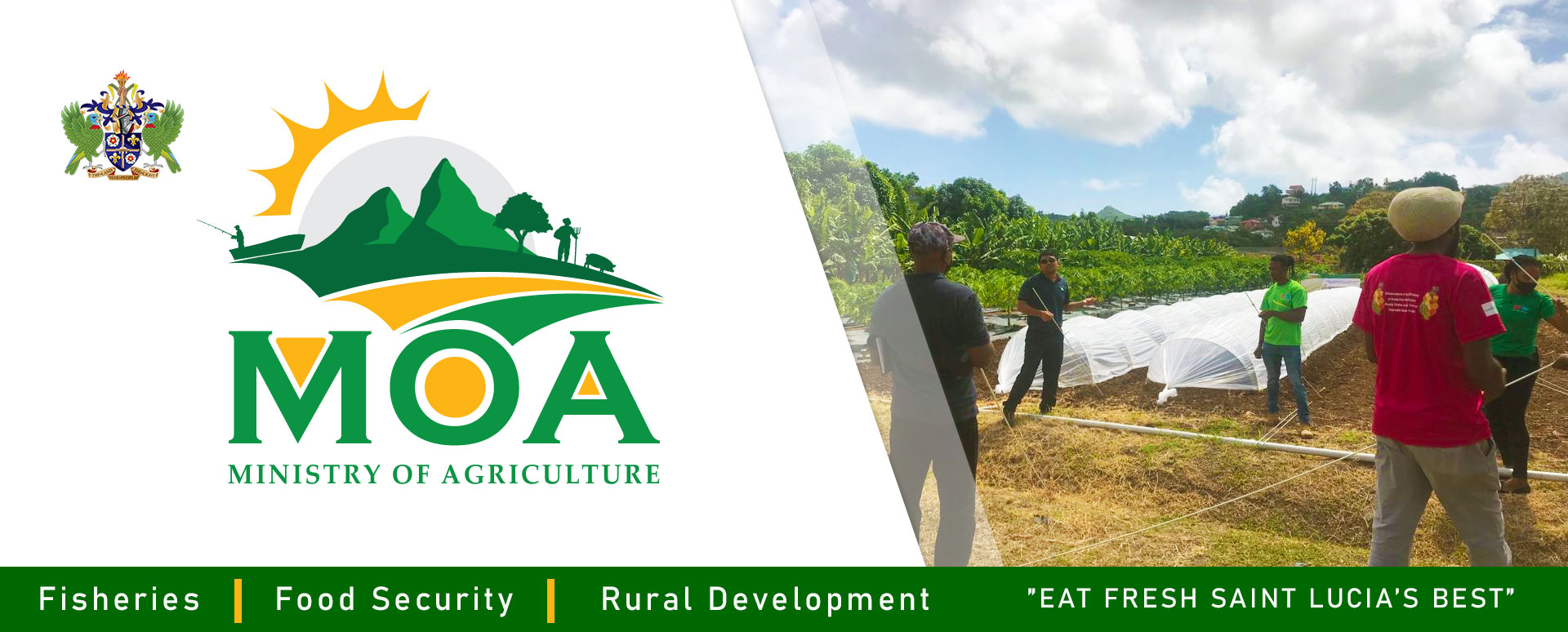EXTENSION AND ADVISORY SERVICES
Extension and advisory services are a critical component of rural development and have been shown to contribute to the reduction of hunger and poverty, increase adoption of improved technologies, and increase productivity and capacity of clientele. In the past 20 years, extension has changed from technology-focused, public services-dominated, transfer of technology approaches to a much broader scope with many different actors from the private and civil society sectors (Sulaiman and Davis 2012).
International and Regional cooperating partners such as the OECS Secretariat, Un-FAO, IICA ad more recently several agencies focused on climate adaptation, continue to provide technical support services towards enhancing competitiveness in service delivery. This is achieved in part through the development of technical competence and initiation of modern strategies for service delivery.
Extension in Saint Lucia remains dominated by the public sector, although commercial companies operate in the island with commercial agriculture.
ICTs and increased communication through social media presence new and exciting opportunities for information dissemination and ensuring that the clients of extension receive up-to-date information related to their enterprises. However, this reality presents interesting challenges such that farmers and other stakeholders now have information at the tips of their fingers and may be less inclined to consult an Extension advisor.
This reality needs to be used with caution in that farmers run the risk of trying out practices that are not country-specific or may not have been validated locally. This could result in significant negative impacts on farm enterprises.
The Extension and Advisory Services Division (EASD) of the Ministry of Agriculture remains steadfast in fulfilling its mandate; facilitating farmer education and education of the wider community of stakeholders involved in food production. The EASD continues to utilize discovery-based learning methods and participatory approaches such as Farmer Field Schools (FFS), field days, and field tours working with clientele to identify knowledge gaps. These gaps are then prioritized based on impact on the farm business enterprise, livelihoods, social, economic, and environmental impacts. Further, stakeholders are engaged in identifying possible solutions to these gaps and programs developed to fulfill these knowledge gaps.
The EASD consists of relatively young individuals and this presents new and exciting opportunities for modernizing service delivery. Notwithstanding, that reality is thwarted by limited competencies and a seeming apprehension on the part of technicians to pursue higher learning in the field of Extension and Advisory Services. In light of this, strategic actions are being undertaken to provide in-house training to further equip Officers with the requisite knowledge to influence positive change.
Mr. Eloi
Chief Extension Officer
OUR UNITS
REGION 1 & 2
REGION 3
REGION 4
REGION 5
REGION 6
REGION 7
REGION 8
Saint Lucia under the leadership of the Department of Sustainable Development and with support from the International Sustainable Development has prepared a National Adaption Plan. Agriculture is one of the priority sectors along with water and fisheries. A sectoral adaptation strategy and action plan have been prepared for the Agricultural Sector with EASD being integrally involved in the process.
This is an indication of Extension’s commitment to facilitating climate adaption action at the farm and community level.
The contributions of the EASD continues to be focused on:
- Climate-smart agriculture to enhance the adaptation process. Ultimately increasing resilience to climate change and formulating coping strategies post-disaster
- Improving food and nutrition security
- Promoting food safety through good agricultural practices (GAPs) and farmer certification
- Enhancing livelihoods and socio-economic wellbeing of farmers and rural communities through productivity gains and enhanced market access
- Promotion of social integration through strengthening and fostering the development of producer and marketing cooperatives and
- Promotion of sustainable use of natural resources through sustainable land management, integrated pest management, integrated plant nutrition to mention a few
- Creating a learning environment through peer to peer learning exchanges for sustainability and posterity
PRODUCTION
GUIDELINES
"EAT FRESH SAINT LUCIA'S BEST"
Principal Objectives –EASD
- To enhance the economic, social, and sociological competitiveness of the rural population through Education.
- To orient, education to “Help the people to help themselves” using discovery-based learning techniques and learning by doing.
- To be information brokers facilitating exchanges between policymakers and practitioners and guiding the research agenda.
- Work with clientele to gather reliable data to inform the monitoring and evaluation process as well as decision-making both at grassroots and policy-making levels.
- To involve clientele in the development process by agreeing and prioritizing needs using participatory rural assessment and developing strategies and action plans
- Provide technical support services to all stakeholders involved in crop production and post-harvest handling
- Promote and facilitate the organization of groups and schools for developing actions within the communities
- To function as a learning organization using past experiences, current trends, and future forecasting and planning




